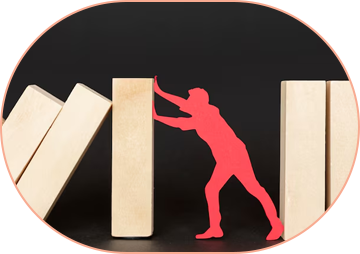The word surrender often carries a negative weight. It is linked with giving up, losing control, or admitting defeat. In a culture that glorifies strength, independence, and constant achievement, surrender feels almost like weakness. But true surrender is not about weakness at all—it is about release. It is choosing to let go of what was never meant to be carried alone. Within surrender lies an unexpected beauty: freedom.
Why Letting Go Feels So Hard
We cling tightly to people, memories, mistakes, and even pain. Letting go feels unnatural because control provides a sense of safety. As long as we hold on, we think we are protecting ourselves from loss, disappointment, or uncertainty.
But holding on often does the opposite. It weighs us down. It locks us into cycles of anxiety, regret, and exhaustion. Letting go feels terrifying because it asks us to trust what comes next without guarantees. Yet that very trust is what makes surrender transformative.
The Weight of Holding On
Consider the moments when life feels heavy: the resentment that lingers after betrayal, the guilt that surfaces over past mistakes, the fear of stepping into the unknown. Each of these is a burden. We carry them as though they are necessary, but the truth is, they drain more than they protect.
Holding on is like walking with a backpack full of rocks. Each regret, fear, or unmet expectation adds weight. Eventually, the journey becomes unbearable. Surrender is the act of setting that backpack down—not because the rocks don’t exist, but because we no longer need to carry them alone.
What Surrender Really Means
Surrender does not mean defeat. It does not mean ignoring problems or abandoning responsibility. True surrender means:
- Releasing control. Accepting that we cannot shape every outcome.
- Trusting the process. Believing that peace can exist even in uncertainty.
- Embracing freedom. Making space for healing by letting go of what drains us.
Surrender is not passivity—it is active trust. It is a decision to no longer allow fear, regret, or control to dictate the path forward.
Freedom Found in Surrender
When we finally release what we have been holding, we discover freedom in unexpected ways:
- Emotional Freedom. Letting go of anger, resentment, or shame lightens the heart. What once replayed endlessly in the mind loses its grip.
- Spiritual Freedom. Surrender opens space for faith, reminding us that we don’t walk alone. It invites a higher strength into the journey.
- Relational Freedom. By releasing unrealistic expectations—of ourselves or others—we create healthier, more authentic connections.
Surrender is not loss; it is gain. It creates room for peace where chaos once lived.
The Courage to Trust
Perhaps the hardest part of surrender is trust. It requires us to step into the unknown without proof that everything will work out. Trust says: “I don’t know what tomorrow holds, but I believe it can still be good.”
This kind of faith doesn’t erase uncertainty, but it gives us strength to face it. Trust is the bridge between surrender and freedom. Without it, surrender feels like defeat. With it, surrender becomes empowerment.
Practical Ways to Practice Surrender
Surrender is not just an idea—it is a daily practice. Here are steps that make it real:
- Pause in Silence. Quiet reflection helps us notice what we’re holding onto unnecessarily.
- Name the Burden. Saying aloud or writing down the weight we carry brings clarity.
- Release Through Action. Sometimes surrender means having a hard conversation, sometimes it means choosing not to revisit old wounds.
- Lean on Faith. Prayer, meditation, or spiritual reflection helps ground surrender in trust.
- Focus Forward. Instead of replaying the past, redirect energy toward building what comes next.
Each small act of letting go adds up, creating a rhythm of release that reshapes the way we live.
Stories of Freedom
Throughout history and in countless personal journeys, surrender has marked turning points. People who once clung to destructive habits found freedom when they finally released control and asked for help. Those who carried deep shame discovered peace when they forgave themselves and trusted in grace.
These stories remind us that surrender is not about giving up—it is about opening the door to change. What once felt impossible becomes manageable. What once felt broken becomes whole again.
The Beauty Revealed
There is a surprising beauty in surrender. It softens the spirit, humbles the heart, and restores balance. It allows us to see that not every battle needs to be fought, not every wound needs to be reopened, and not every answer needs to be forced.
By surrendering, we do not lose ourselves—we find ourselves. We uncover strength that was buried beneath the weight of control. We realize that freedom does not come from holding tighter but from letting go.
Closing Thought
Surrender will always feel hard because it goes against our natural desire for control. But in truth, surrender is not weakness. It is courage. It is choosing peace over chaos, freedom over burden, and trust over fear.
The beauty of surrender is simple yet profound: by letting go, we finally find the freedom to live fully, love deeply, and walk forward in peace.

